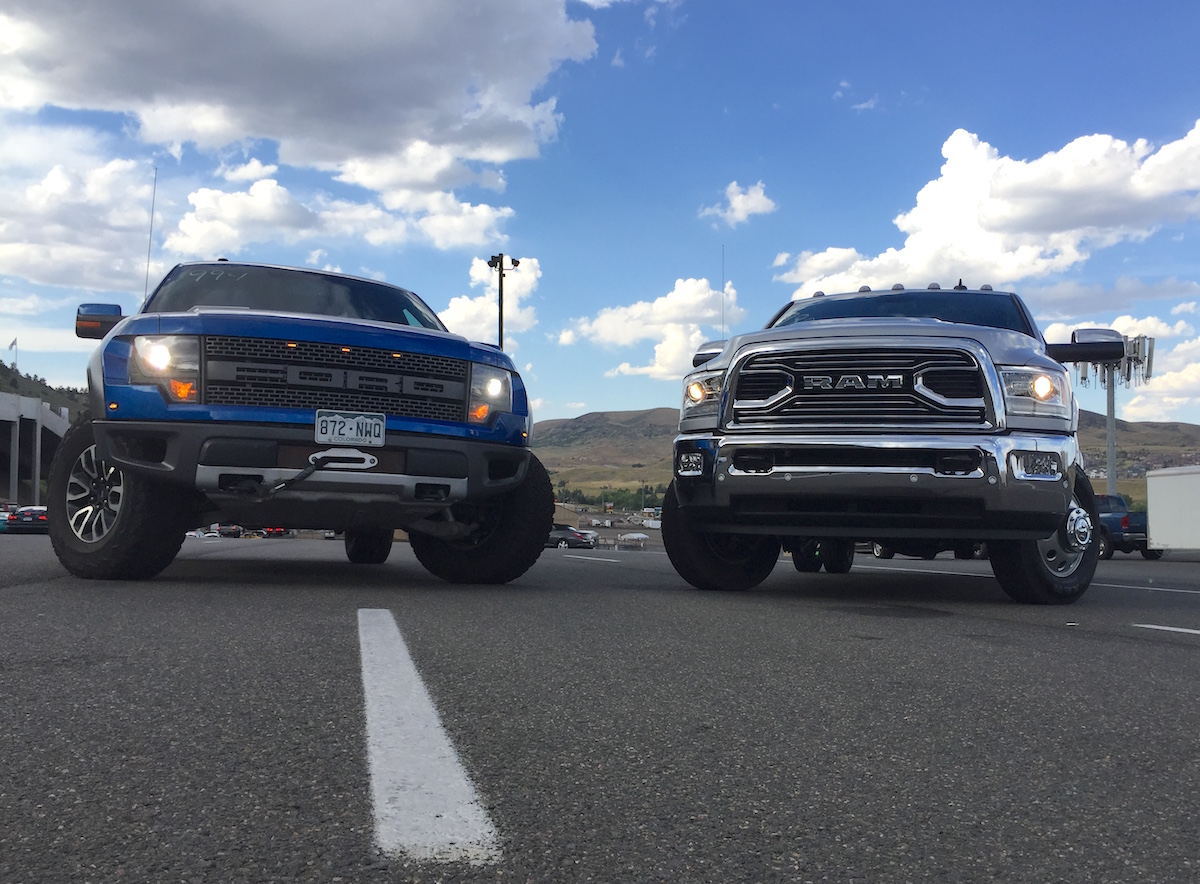
Ford’s said for years that the current-generation Ranger sports major changes to the long-running global (T6) version.
If you casually observe either truck out in the wild, we’d forgive you for calling foul on the claim these trucks are actually all that different. I mean, apart from minor lighting changes and wheels, both trucks look virtually the same on first glance. There are key differences worth mentioning, however. So, if you’re still looking at this generation Ranger — before the new model arrives in 2024, that is — you’ll want to check out the video below. As the TFL team just added a 2019 Ranger to our truck fleet, Andre is keenly interested in poring over the details surrounding how these two trucks actually differ from each other.
Architecturally speaking, both versions of the existing Ford Ranger obviously share a lot in common.
One of the most blatant changes for the North American market lies with the front fascia, and specifically with the steel bumpers. The global Ford Ranger T6 does not get that styling detail, instead integrating the front clip more tightly between the bumper and the hood, fenders, grille and lights.
Sticking with the steel conversation, Ford says it’s also reinforced the frame at key points both front and rear, particularly to increase rigidity and accommodate a 2-inch tow hitch receiver used throughout the North American market. It further changed up the frame rails to comply with U.S. crash standards. In line with stiffening the chassis, the automaker also retuned the U.S. Ranger’s suspension, which includes swapping the rear axle out for a U.S.-sourced Dana Advantek M220 beam axle among a host of other changes like the rear leaf springs to balance the truck’s weight and ride performance.
That said, at just 1,400 pounds of payload as our truck’s equipped, the U.S.-spec truck cannot haul quite as much as their European counterparts. There’s a bit of give and take there, as many other markets don’t have the option to up-size to the F-150 to secure extra payload. At 7,500 pounds of towing capability, both versions can come pretty close, depending on the configuration.
What about the powertrain?
The major difference between the two trucks is what’s under the hood. For North America, Ford equipped the current-generation Ranger with a gasoline-powered, 2.3-liter EcoBoost four-cylinder engine. That pairs up to the jointly-developed Ford-GM 10R80 10-speed automatic transmission, and that’s all we get in our market, at present.
Sticking with that decision for a moment, Ford engineers also brought in hydraulic engine mounts for the U.S.-spec Ranger. For our truck, the company said at the current-gen Ranger’s launch that it focused on improving NVH (noise, vibration, harshness) for the U.S.-spec truck to more aptly deal with the American adoration for long road trips and daily driver duty.
As for the global truck, you get a wider assortment of engine options.
In addition to the 2.3-liter EcoBoost, you can also get a 2.5-liter Duratec engine and a range of turbodiesels. Depending on the model year and market, you can get a 2.2-liter Duratorq inline-four, a 3.2-liter Duratorq inline-five, or Ford’s 2.0-liter EcoBlue turbodiesel engine. The Ford Ranger Raptor that we ultimately didn’t get on our shores packed a twin-turbocharged version of that 2.0-liter mill with 210 horsepower and 370 lb-ft of torque.
The interior also brings some subtle changes between the two trucks, which you can check out in the video below:
In time, we’ll eventually see the new generation Ford Ranger, which is already in production in Thailand and South Africa for global markets. It should arrive in the U.S. for the 2024 model year.
More importantly, we will see a Ranger Raptor in our market this time around. That version will bring in Ford’s larger 3.0-liter EcoBoost twin-turbo V6, with around 400 horsepower. It manages 392 horsepower (397 PS or 292 kW) for the Australian market, but those specs could change a bit as the company readies the truck for sale in the U.S. and Canada.

















![Which is More Reliable: 3.5L EcoBoost or 5.0L V8? [Reader Question] Second-generation 3.5-liter EcoBoost engine](https://tfltruck.com/wp-content/uploads/2016/05/Second-generation-35-liter-EcoBoost-engine.jpg)
![Which Silverado Engine to Get: 5.3L or 6.2L V8? [Ask TFLTruck] 2016 chevy silverado](https://tfltruck.com/wp-content/uploads/2015/10/2016-chevy-silverado-grille.jpg)
